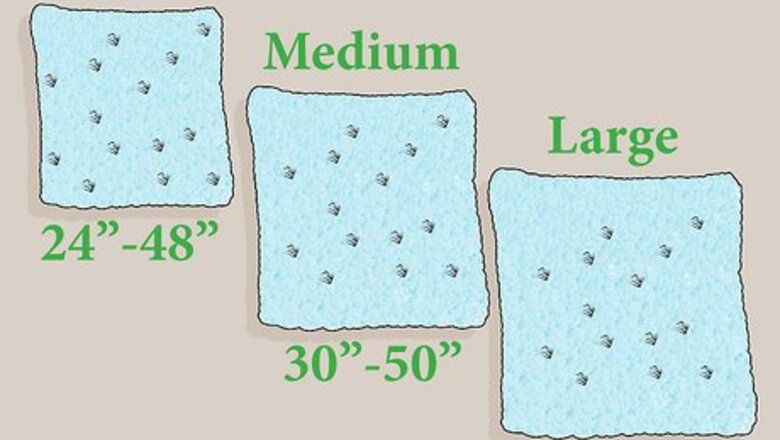
views
Designing Your Lap Blanket
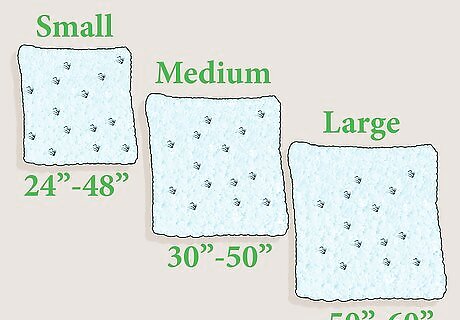
Decide how big you want your blanket to be. Lap blankets can range in size from very small to very large. If you are knitting this project for yourself or for someone else, then consider what the ideal measurements might be. You might even consider measuring the width of someone’s lap and the length of their legs to decide how large your blanket should be. For a small lap blanket, the final measurements may be about 24 to 48 inches. For a medium lap blanket, the final measurements maybe about 30 to 50 inches. For a large lap blanket, the final measurements may be about 50 to 60 inches.
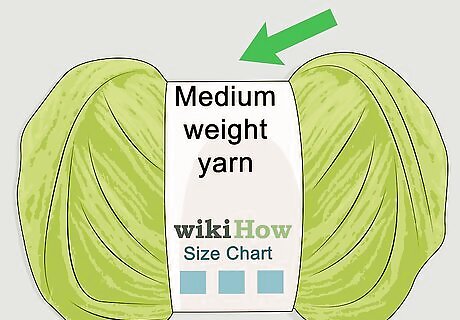
Choose your yarn. You will need between five and 10 regular sized balls of medium weight yarn to complete a lap blanket. The larger you plan to make the blanket, the more yarn you will need. However, you can also get extra-large balls of yarn that are meant specifically for knitting blankets. If you're making a winter blanket, choose a heavier yarn, like wool. Go with a lightweight yarn, like cotton, if you want a blanket that you can use in warmer climates. Use any color or colors you like. You can choose just one color, a couple of colors, or make a rainbow-like blanket with several colors.
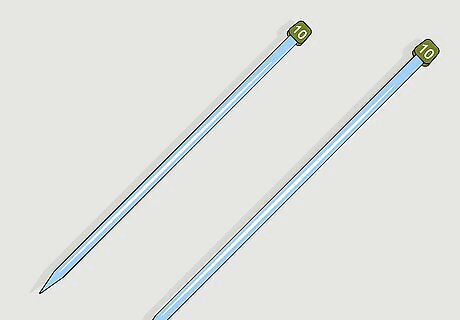
Select your knitting needles. You can use regular knitting needles or circular knitting needles to make a blanket. If you opt for regular needles, just make sure that they are long ones so that they will be able to hold all of the stitches. You can also use a pair of circular needles. The length of nylon suspended between the two circular needles will easily hold all of the stitches. Check the label on the yarn to see what size needle you should use. A pair of size 10 regular or circular needles (32 or 40 inch) is a suggested size for medium weight yarn. However, if you decide to go with a bulky yarn, then you might want to use larger needles, like size 13 needles. Circular needles are usually meant for knitting in the round, but you do not have to knit in the round when you use them. If you decide to use circular needles, knit across all stitches as you usually would and then turn the stitches around and knit across the row in the opposite direction.
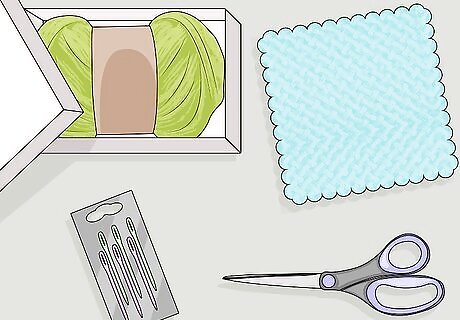
Gather other items you will need. Before you get started you will need to gather a few more items. You will need: Pair of scissors. Having a good pair of sharp scissors is always a good idea when you are knitting. You may need them when you switch colors and you will definitely need them when you finish your project. A large eyed needle for weaving in ends. You can find plastic needles in the knitting sections of craft stores. These are useful for weaving in ends and finishing projects. Something to keep your yarn in while you knit. If you have a knitting bag, then this is ideal. If not, then you can use an empty box or a bag (canvas or plastic). This will help to keep your yarn from rolling all over the floor while you knit your blanket. Pattern (optional). If there is a pattern that you want to follow or use as a basic guide, then this may also be helpful as well. However, you do not need a knitting pattern to make a simple lap blanket.
Making a Simple Lap Blanket
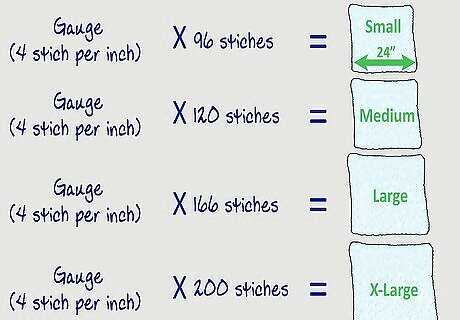
Cast on your stitches. To get started, cast on the number of stitches that you will need to get your desired blanket width. To determine how many stitches to cast on, check the gauge of your yarn and needles or use the yarn label to guide you. You can determine how many stitches to cast on by multiplying the gauge by the desired dimension. For example, if you want a lap blanket that is 24 inches wide and your gauge is 4 stitches per inch, then you would need to cast on 96 stitches. A 96 stitch cast on would result in a small lap blanket. If you want a medium sized blanket, then try casting on 120 stitches. For a large lap blanket, cast on 160 stitches. For an extra-large lap blanket, cast on 200 stitches.
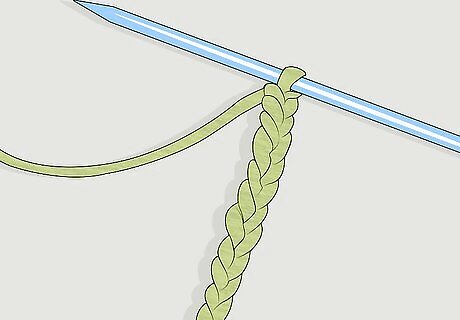
Knit across the first row. After you have cast on your stitches, knit across all of these stitches using a basic knit stitch. However, if you want to try a different stitch or add some embellishment stitches, then you may also do that.
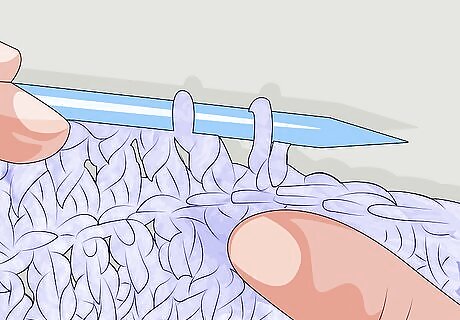
Continue to knit all rows until you reach the desired size. Getting your blanket to its final length will take time, especially if you are using a medium or light weight yarn. Try to be patient and just work on the blanket in short sessions every day. Over time, the length will grow. Just keep in mind that it may take several weeks of regular work to complete a blanket.
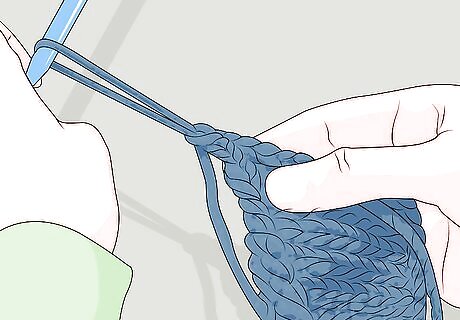
Finish the blanket by casting off and weaving in the ends. When you have finally achieved the desired length, you can finish the blanket. To do this, you will need to cast off your stitches and weave in any loose ends that were left when you switched skeins. Use a plastic needle to weave in the ends. You can simply sew them into the edges of the blanket to hide them. If your ending stitches are too tight, your knitting may pucker up. It may help to use a larger needle when you're binding your stitches.
Making a More Advanced Blanket
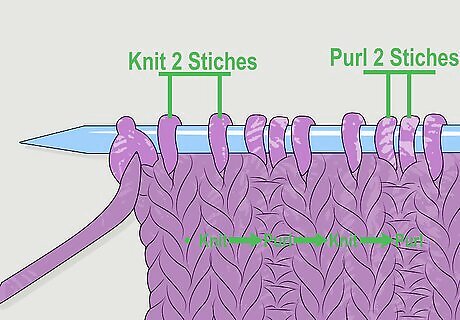
Add ribbing. Ribbing is a simple way to add some flair and texture to a lap blanket. To create ribbing in a knit garment, all you have to do is alternate between knitting and purling. For example, you could create ribbing by knitting 2 stitches and then purling 2 stitches. You would follow this pattern of knit, purl, knit, purl through the whole blanket and it would create a striped effect.

Do a basketweave stitch. The basketweave stitch is another simple way to add texture and interest to a lap blanket. To do this, you need to create small squares of knit stitches and purled stitches. These can be as small or as large as you want them to be. For example, you could make squares that are 4 stitches by 4 stitches. You would simply follow a pattern of knitting 4, then purling 4. After four rows, you would switch the pattern so that you start with purling 4, then knitting 4, and so on.
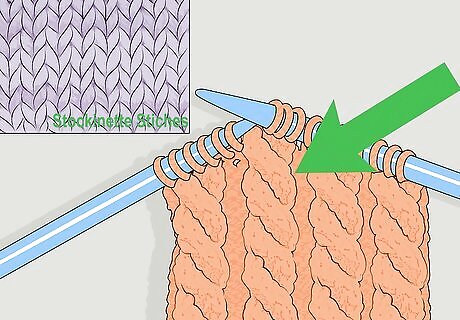
Try adding cable stitches. Cable stitches give knitting projects a twisting embellishment, and they are easier to do than they look. Making cables in your lap blanket will require a special cable needle and some practice to get the cable stitch down. However, it can add some pretty details to your project. If you want to add cable stitches to your lap blanket, then you may want to use a stockinette stitch for the background. This will help to make your cables stand out more.
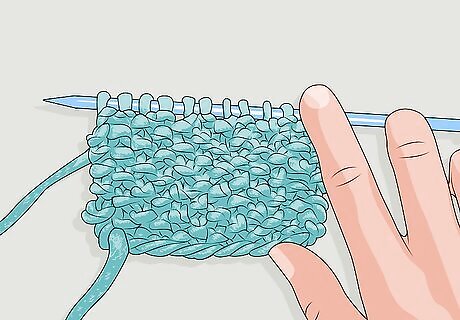
Use a seed stitch. The moss stitch or seed stitch adds dimension to knitting projects. If you want your lap blanket to have some texture and dimension, then this is a great way to accomplish that. Try practicing the seed stitch to ensure that you have it down before you use it. To do this stitch, perform a knit stitch, bring the yarn to the front in between your needles, then do a purl stitch. Keep alternating the stitches, and when you get to the end of the row, turn it over. Start with the opposite stitch from what you see at the beginning of each row, so they alternate.










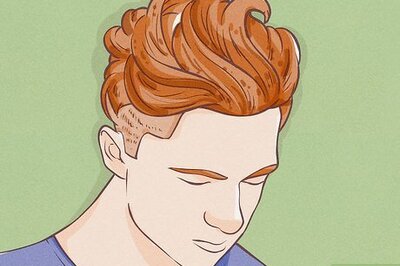



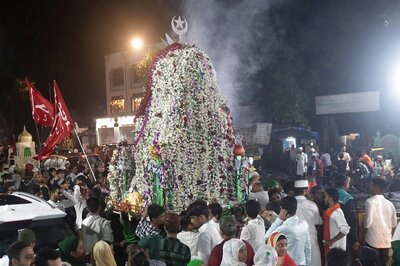

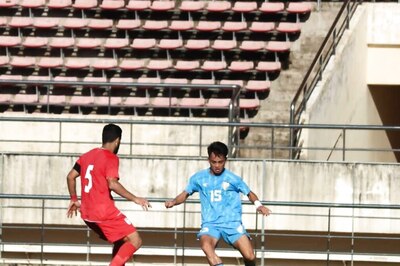

Comments
0 comment